Eastern Gamagrass is an edible you don’t see and then you do. This is because while a native it is used ornamentally and kept trimmed. So you don’t notice it until it blossoms and seeds. The other problem is we’ve had — until last week — a warm winter thus the grass doesn’t know quite what to do. I have seen it fruiting recently, which is technically between seasons.
There are no toxic native North American grasses which helps to make Eastern Gamagrass one of my favorites. It was also top of the line for buffalo and cattle ranchers. While it does grow in clumps, it can be used like wheat and the seeds can even be popped like corn. The showy male flowers are on top of the stalk and the less extroverted female flowers further down. Wind and gravity aid in pollination. As mentioned it is often overlooked because for much of the year it can be an ornamentally trimmed clump that looks grassy, green and nondescript. But once you see the grass blossoming you will remember it. To read about Eastern Gamagrass go here.
If you haven’t already you should register for and plan to attend the fifth annual Florida Herbal Conference in Lake Wales. You can even take a side trip and see the famous Bok Tower and Gardens. Organized by Emily Ruff, she has an all-star herbal cast lined up to teach and present. Speakers this year include world-renowned mushroom expert Paul Stamets and herbalist Kathleen Maier, director of Sacred Plant Traditions in Charlottesville, VA where she offers a Three Year Clinical Community Herbalist training program. Even yours truly will be there for his fifth year teaching wild edibles. Workshops focus on bioregional, earth-centered herbalism, with topics including clinical herbalism, herbal crafts, herbal tradition and history, medicine making, plant identification walks and many hands-on demonstrations. The weekend also includes a marketplace of herbal vendors, musical activities each evening, fun herbal activities during free time, guided movement activities throughout the weekend, a powerful fire circle, and regional mixers. You need to get thee there. For more information click here.
Tis the season of good cheer because Sea Blite is beginning to sprout this year. During a class near Daytona Beach we managed to find some young plants. Of all the tasty salt-tolerant wild vegetables Sea Blite is in my opinion the best. Good texture, flavorful, nutritious, it is also the one brackish water plant I receive a lot of formal request to harvest seeds for. Several governments with salty wasteland view the plant as a seasonal commercial crop and a good way to make fallow land productive. I just like the flavor of it and can remember exactly all the places where I’ve found it. One location where I found it in abundance is near the nude beach south of New Smyrna Beach in the national park. On the beach where the road dead ends nudists like to sun themselves. But on the opposite inland water side where canoeists launch there is a woods road to the south. There I have found Sea Blite in abundance, but no nudists. You also have to go early or on bad days ’cause the sunbathers take up all the parking spaces. To read more about Sea Blite click here and here.
Is the weather strange? Queen Palms are fruiting in Port St. Lucie. One usually doesn’t see that this time of year but I’ve also seen Pindo Palms preparing to fruit as well. Perhaps it was the warm December (which has been followed by a very cold January.) I usually look for these palms to fruit around Memorial Day, give or take. Surprisingly the two palms are close enough to hybridized. So while in the pure strain they are easy to sort the hybrids can be confusing. Queen Palms are tall and feathery. Their fruit starts green, turn light orange then medium orange. The pulp has lots of fiber and is extremely sticky and sweet. Pindo Palms are half the hight of Queens and squat, much thicker through. The fronds have sharp teeth. Its fruit starts out green then turns light yellow then medium yellow. It’s not as gooey or as sweet at the Queen Palm fruit, and had more of a fruit flavor than just a shot of sugar. The flavor is kind of a mango-banana cross, some say apricots. As for other palms, if a palm is toxic it is usually caused by needle-sharp crystals of calcium oxalate. These cause a burning sensation in the mouth, or fingers. Lime juice is a good antidote or lemon juice.
As mentioned on the Green Deane Forum, where we chat about foraging and related topics — and sometimes unrelated topics — I thought I would mention cactus with pads. They all used to be Opuntias but now are in two genera, Opuntia and Nopales. If they have pads and no white sap they are edible though I think the Nopales genus is more forager friendly. It tends to have less spines and glochids especially when young, which is when we want to harvest pads. Older pads, while good for planting to grow more, get woody and have a lot more thorns and glochids. It’s the latter which are the more insidious. About an eight of an inch long they are hair-like and can irritate you for days. Harvest carefully. In fact I had a Nopales pad in my back yard salad last night for supper. Besides having a good array of vitamins and minerals cactus pads are also mucilaginous, viscous. That actually can coat the inside of your smaller intestine and slow down the absorption of glucose thus reducing blood sugar spikes. In fact some diabetic medication instruct you not to eat cactus while taking the medication. The viscous material also feeds good bacteria in your lower gut keeping everyone happy. You can read more about cactus by joining the Green Deane Forum on the right hand side of the page, or go here.
Foraging Classes: The group classes are usually about four hours long and involve walking along paths and trails and finding wild edibles to talk about. Most locations have drinking fountains and bathrooms. One should dress for the weather. Children accompanied by an adult are welcomed. To learn more about foraging classes go here.
Sunday, Jan. 31st, Jervey Gantt Recreation Complex, 2390 SE 36th Ave., Ocala, FL, 9 a.m.
Sunday, Feb. 7th, Red Bug Slough Preserve, 5200 Beneva Road, Sarasota, FL, 9 a.m.
Sunday, Feb. 14, Mead Garden,1500 S. Denning Dr., Winter Park, FL, 9 a.m.
Sunday, March 6th, Florida State College, south campus, 11901 Beach Blvd., Jacksonville, 9 a.m.
Sunday, March 13th, Mead Garden, 1500 S. Denning Dr., Winter Park, FL, 9 a.m.
Saturday, March 19, Colby-Alderman Park: 1099 Massachusetts Street, Cassadaga, 9 a.m.
Saturday, March 26th, Dreher Park, 1200 Southern Blvd., West Palm Beach, 9 a.m.
Sunday, April 3rd, John Chestnut County Park: 2200 East Lake Road, Palm Harbor, FL, 9 a.m.
Sunday, April 10th, Wekiva State Park, 1800 Wekiwa Circle, Apopka, Florida 32712. 9 a.m.
Sunday, April 17th, Bayshore Live Oak Park, 2200 East Lake Road, Port Charlotte, FL. 9 a.m.
Sunday, April 24th, Wickham Park: 2500 Parkway Drive, Melbourne, FL 9 a.m.
All of Green Deane’s videos are available for free on You Tube. They do have ads on them so every time you watch a Green Deane video I get a quarter of one cent. Four views, one cent. Not exactly a large money-maker but it helps pays for the newsletter. If you want to see the videos without ads and some in lightly better quality you can order the DVD set. It is nine DVDs with 15 videos on each. Many people want their own copy of the videos or they have a slow service and its easier to order then to watch them on-line. They make a good gift for that forager you know. Individual videos can also be ordered. You can order them by clicking on the button on the top right of this page or you can go here.
Many of you have taken the advantage of getting some nearly free mustards seeds from me. As some of you know I am also a gardener. I ordered a few mustard seeds. Somewhere between the ordering and the shipping I ended up with a pound of Osaka Purple Mustard seeds. I have thousands of mustard seeds when I wanted about 30. Thus I have been giving them away so they will not go to waste. If you want some to grow send me a self-addressed stamped envelope and I will send you some seeds. They will be affixed to tape in a coin envelope so to not exceed a first-class envelope in weight and thickness. The seeds rub off the tape easily. Mail the SASE to Green Deane, POB 941793, Maitland FL. 32794.
This is newsletter 193.
To donate to the Green Deane Newsletter or website click here.

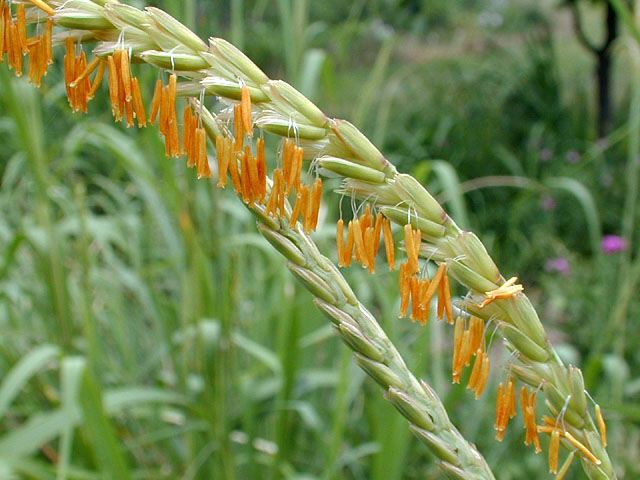
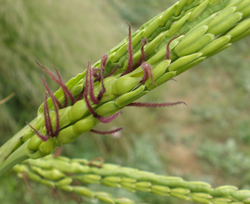
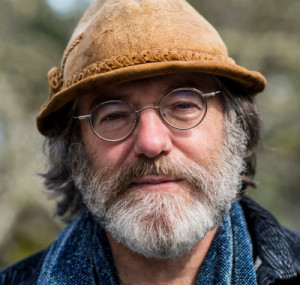
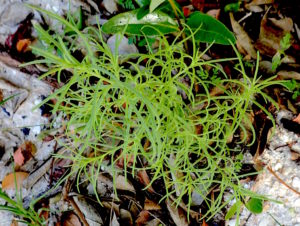
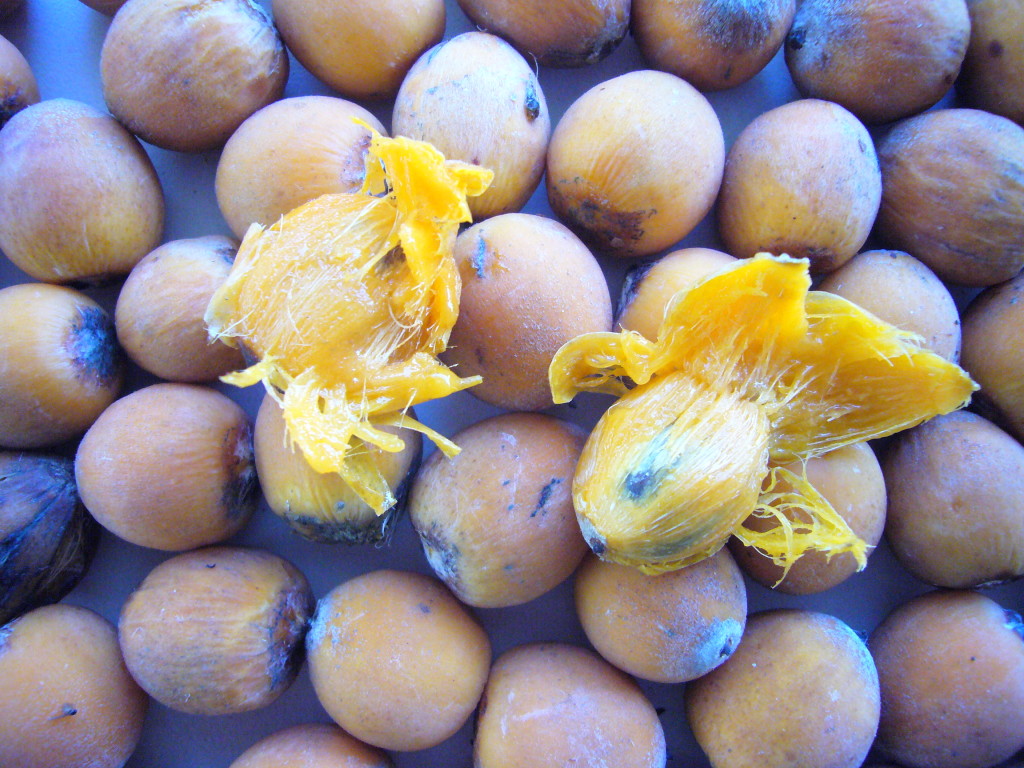
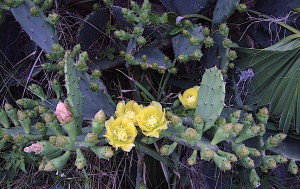
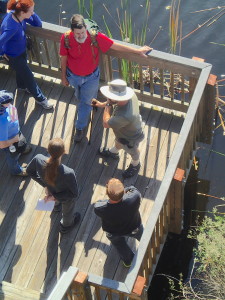
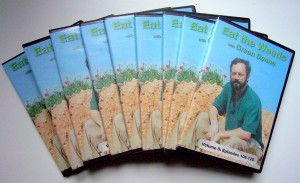
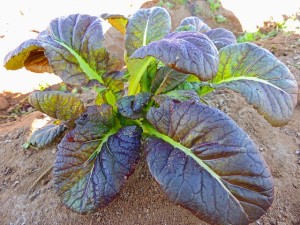

Nice to see some info on our grasses. Being born and raised in the Tallgrass Prairies of Kansas grasses such as Big Bluestem, Little Bluestem, Indian Grass, and Eastern Gamagrass are an everyday site. They grow on the prairies for as far as your eyes can see in some areas. They are truly amazing plants. Thanks for the info.
Paul Stamets could pass as your bro Deane! Sure wish I could be there, you guys rock! Plant? Vegetate?
It would be really appreciated if you could come up to the Olympia WA area and do a program on edible plants up here. many of the plants you have there are not up in this area.
Thanks for a great site.
I’ll focus on Eastern gamagrass which has been well tackled in this issue and your previous article. First I must acknowledge that I have broadened my vocabular: bunchgrass, spike, panicle, skipper, extruded anthers, cupulate fruit-cases, also expressions like: showy male flowers and less extroverted female flowers and even from comments like that of Todd who had a love affair with the plant as did his cattle, sheep and goats as well as that of Tima Kirimaua. I do like the way you basterdize the words to get Tripsacum.
Wad Sheriefay village in the outskirts of my home town, Kassala, is famous for rich alluvial fertile soil where a relative of Eastern gamagrass is grown. I’ve never seen such large ears of “Eish elReef – vernacular for maize (Zea mays L.) or rather Tripsacorn which is an “invention” from two wild relatives: Eastern gamagrass and Teosinte. It is worthy to mentio that this “invention” has led that teacher of anthropology – Mary Banks to divert to research in genetics.
Dean Your site and newsletter always excites me. I want to learn as much as I can about edible weeds. I truly hope to make it to a foraging class at some point but currently caring for my 91 yer old mother with Alzheimers and COPD. I have a plant growing in my yard that I believe to be a weed but don’t know what it is. It has heart shaped velvety leaves with salmon pink tiny flowers which leave a pod that looks like a honey cone. It is growing like bush right now but could be a tree if I don’t cut it pretty soon. lol I can send photos if you’d like. Thank you for all the wonderful information you post, it is all so informative and could come in very handy now and in the future. I live in New Port Richey and am going to try to go to the talk in Palm Harbor on April 3.
Thank you
MaryAnn
You can send me the picture. And have you looked into Bacopa monnieri for your mother? You can buy it in local stores but it also grows here.